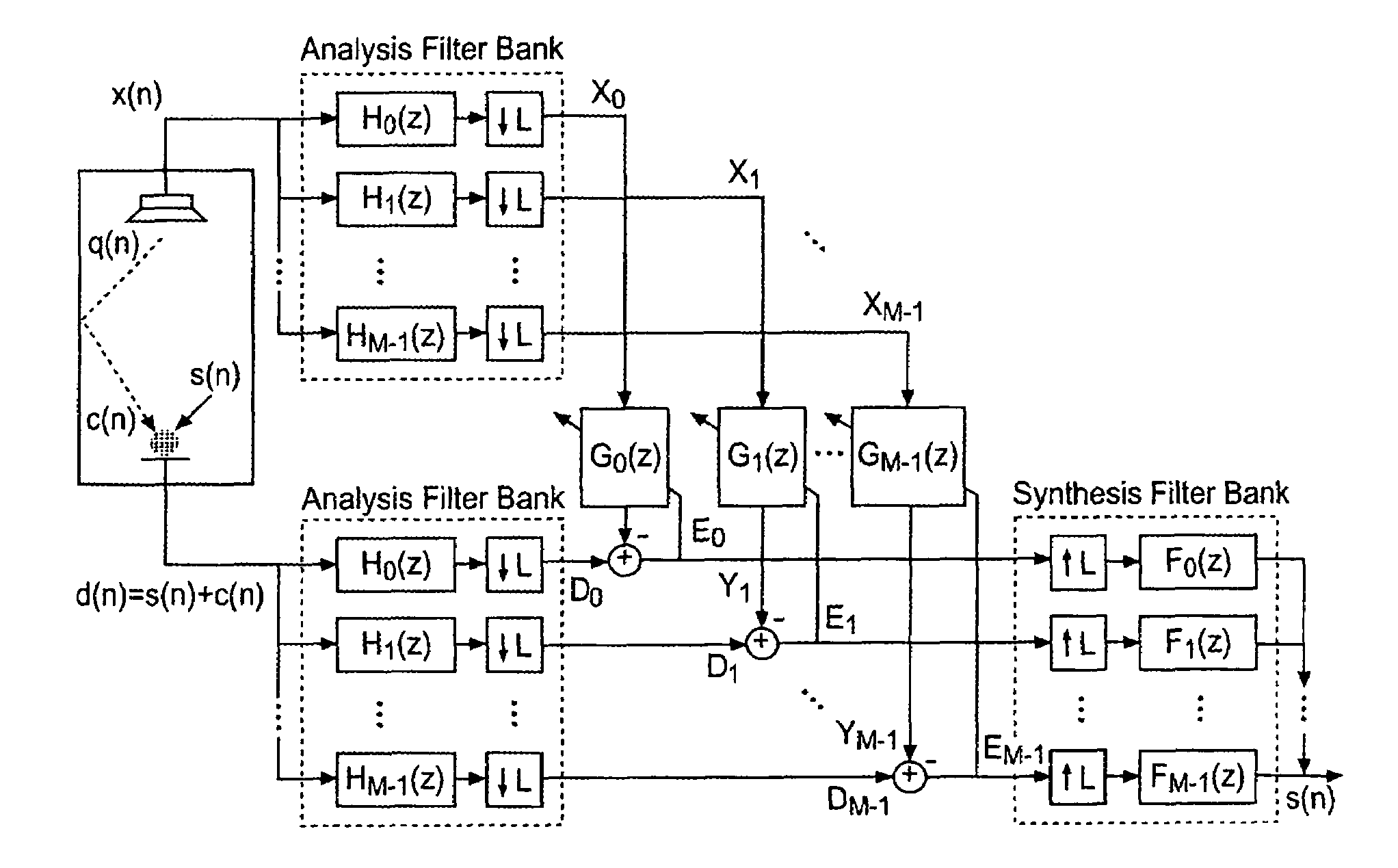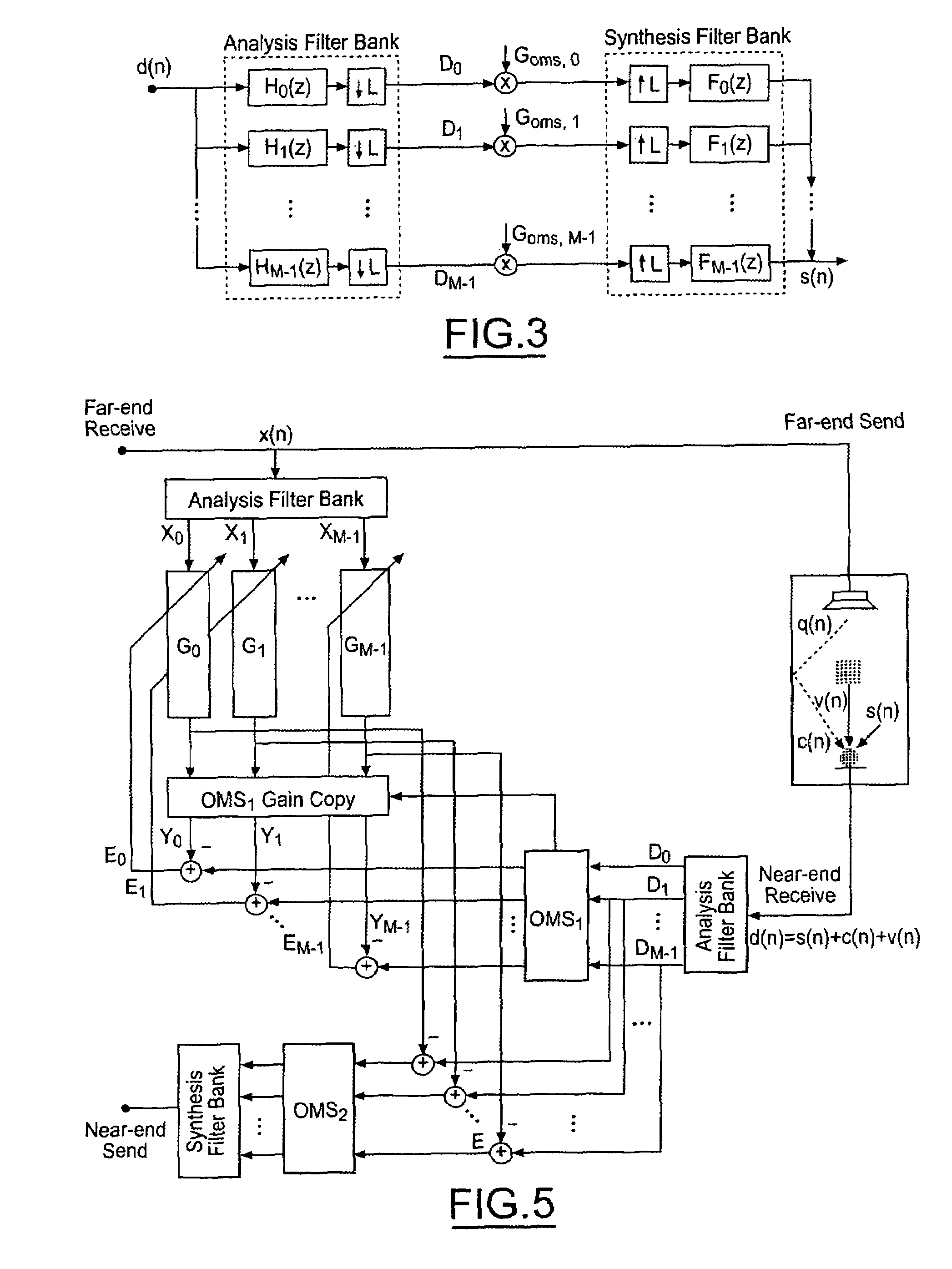Echo cancellation and noise reduction method
a noise reduction and echo cancellation technology, applied in the field of capturing signals, can solve the problems of acoustic echo cancellation (aec), the adaptive filter algorithm needs some type of control, and the echo cancellation has developed into an evolving complex problem, and achieves the effect of reducing residual echo and facilitating the transmission of information
- Summary
- Abstract
- Description
- Claims
- Application Information
AI Technical Summary
Benefits of technology
Problems solved by technology
Method used
Image
Examples
Embodiment Construction
[0043]FIG. 2 illustrates a subband adaptive filter structure. The adaptive filter algorithm used is the second-order DRNLMS in the frequency domain. The noise cancellation algorithm is illustrated in FIG. 3, and is also implemented in the frequency domain. In this way, both the speaker and microphone signals are split into frequency subbands, the AEC and NC are implemented in frequency domain, and the output signal is transformed back to the time domain.
[0044]With continuing reference to FIG. 2, the subband adaptive filter structure used to implement the NLMS in subbands consists of two analysis filter banks, which split the speaker (x(n)) and microphone (d(n)) signals into M bands each. The subband signals are modified by an adaptive filter, after being decimated by a factor L, and the coefficients of each subfilter (Gi) are adapted independently using the individual error signal of the corresponding band (Ei). In order to avoid aliasing effects, this structure uses a down-sampling...
PUM
 Login to View More
Login to View More Abstract
Description
Claims
Application Information
 Login to View More
Login to View More - R&D
- Intellectual Property
- Life Sciences
- Materials
- Tech Scout
- Unparalleled Data Quality
- Higher Quality Content
- 60% Fewer Hallucinations
Browse by: Latest US Patents, China's latest patents, Technical Efficacy Thesaurus, Application Domain, Technology Topic, Popular Technical Reports.
© 2025 PatSnap. All rights reserved.Legal|Privacy policy|Modern Slavery Act Transparency Statement|Sitemap|About US| Contact US: help@patsnap.com



